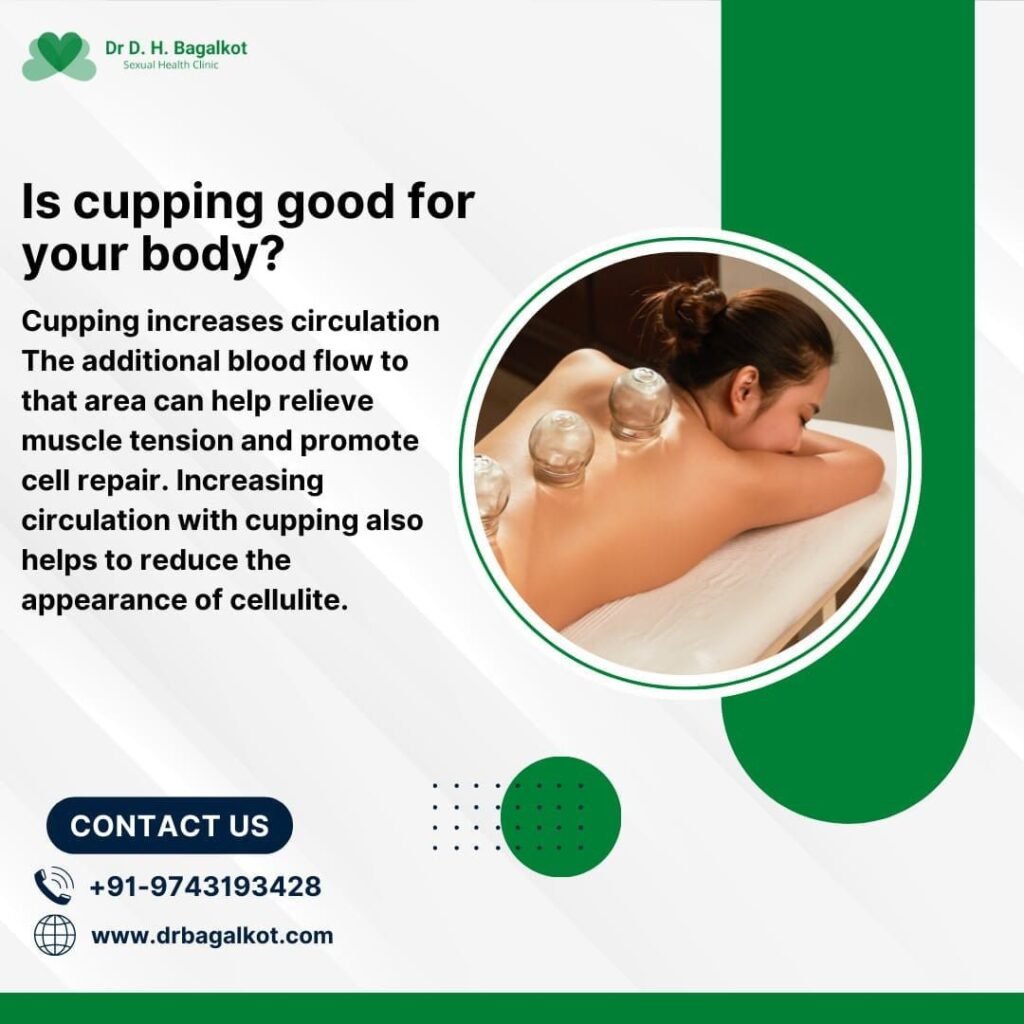Cupping Therapy

Cupping therapy is an ancient alternative healing practice that involves placing special cups on the skin to create suction. This therapeutic technique has been used for centuries in various cultures, including traditional Chinese medicine and Middle Eastern medicine. Cupping is believed to offer several potential benefits, but it’s essential to understand the methods, potential risks, and considerations associated with this practice.
A practitioner places cups on specific areas of the skin and creates a vacuum by removing the air inside the cup. This suction effect causes the skin to rise and redden as blood vessels expand.
The cups may remain in place for several minutes or be moved around to target different areas.
Wet Cupping (Hijama): In wet cupping, the practitioner performs the same initial steps as dry cupping but makes small incisions on the skin after removing the cups. This allows a small amount of blood to be drawn out along with any toxins or impurities.
Wet cupping is often used in traditional Middle Eastern medicine.
Therapy: An Ancient Healing Practice
- Cupping therapy involves the use of various techniques and types of cups, including.
- Dry Cupping: In this method, a cup is placed on the skin, and air is removed to create a vacuum. The suction causes the skin and superficial muscle layer to be drawn into the cup.
Cupping therapy is an ancient healing practice that involves placing special cups on the skin to create suction, which is believed to facilitate healing and improve blood flow. While cupping has been used for centuries, it has gained popularity in modern times as a complementary therapy. In this article, we will explore the origins, techniques, benefits, and considerations related to cupping therapy.

The Origins of Cupping Therapy
Cupping therapy has a long history dating back thousands of years. It is believed to have originated in ancient Egypt and was later practiced in various cultures, including traditional Chinese medicine. In Chinese medicine, cupping is used to balance the body’s vital energy, or “qi,” and promote healing.
Wet Cupping: This involves a two-step process. First, dry cupping is performed to create small incisions in the skin. Then, the cups are reapplied to draw out a small amount of blood, which is believed to remove toxins and promote healing.
Fire Cupping: Fire cupping uses a flame to create the vacuum effect within glass or bamboo cups. Once the flame is extinguished, the cups are quickly placed on the skin.
Benefits and Uses of Cupping Therapy: Cupping therapy is thought to offer a range of potential benefits, although scientific evidence is still limited. Some of the reported benefits and uses include.
Pain Relief: Cupping may help relieve musculoskeletal pain, including back, neck, and shoulder pain.
Relaxation and Stress Reduction: Many people find cupping therapy to be a relaxing experience, which can reduce stress and promote a sense of well-being.
Improved Blood Circulation: The suction created by cupping is thought to stimulate blood flow, which may help with various health issues.
